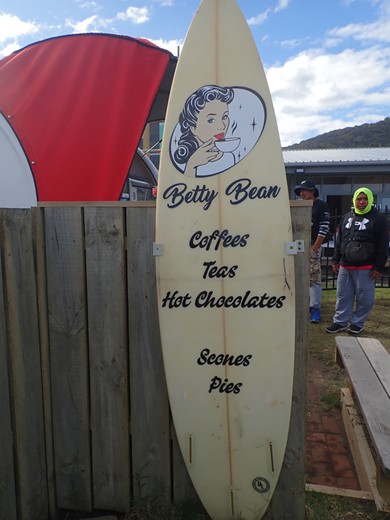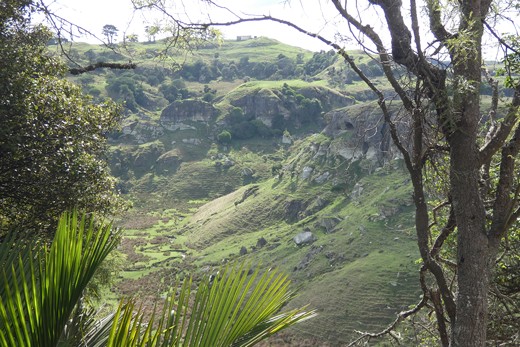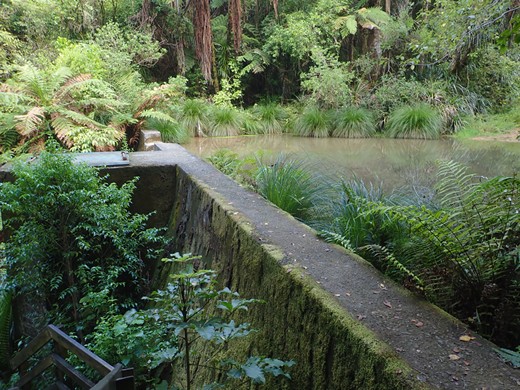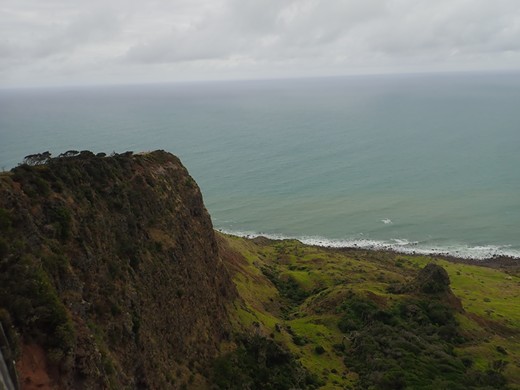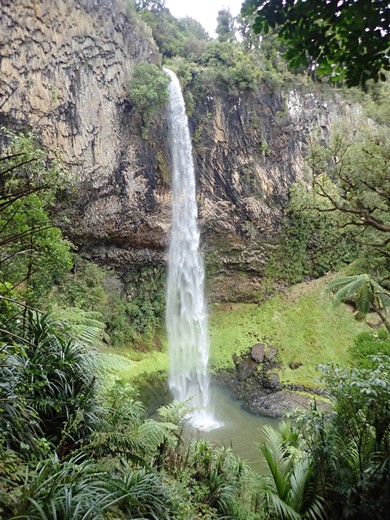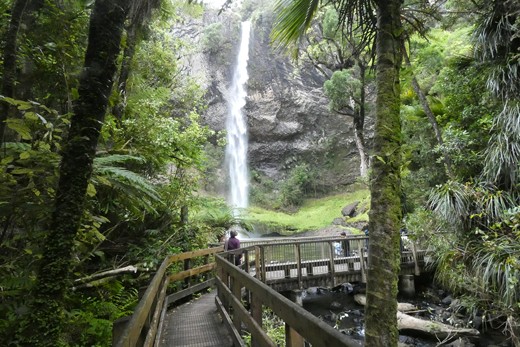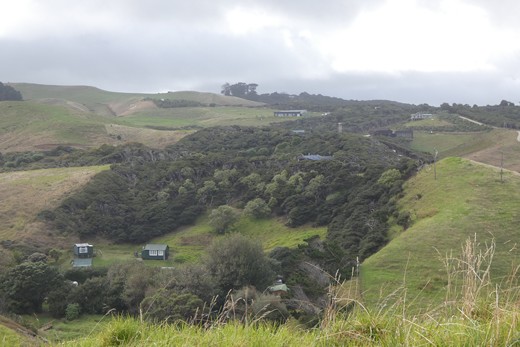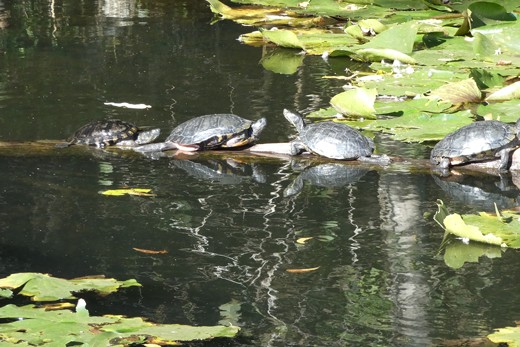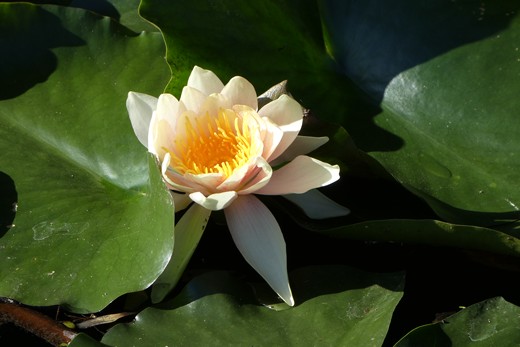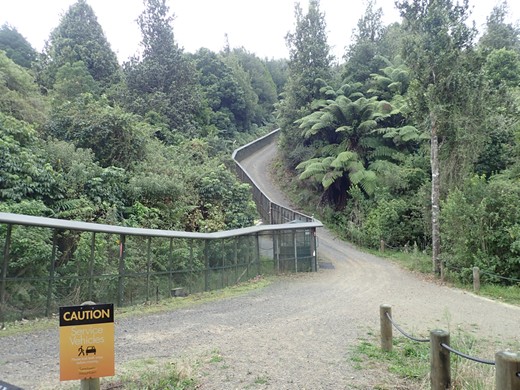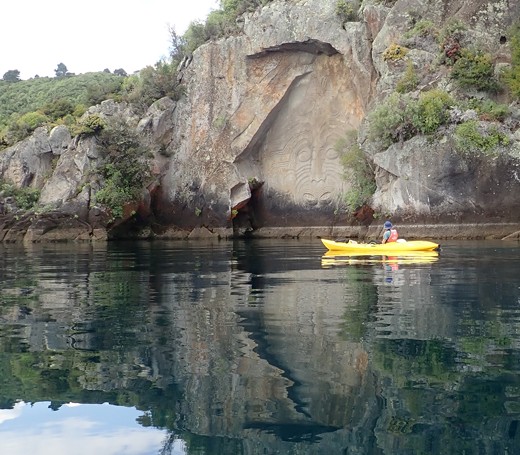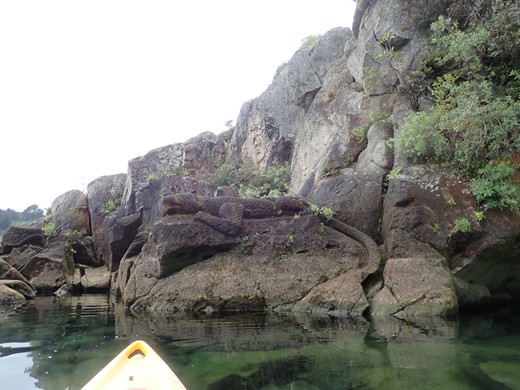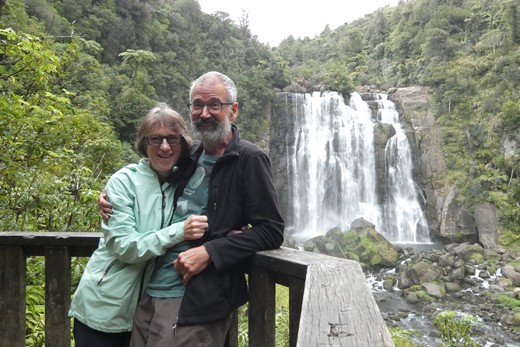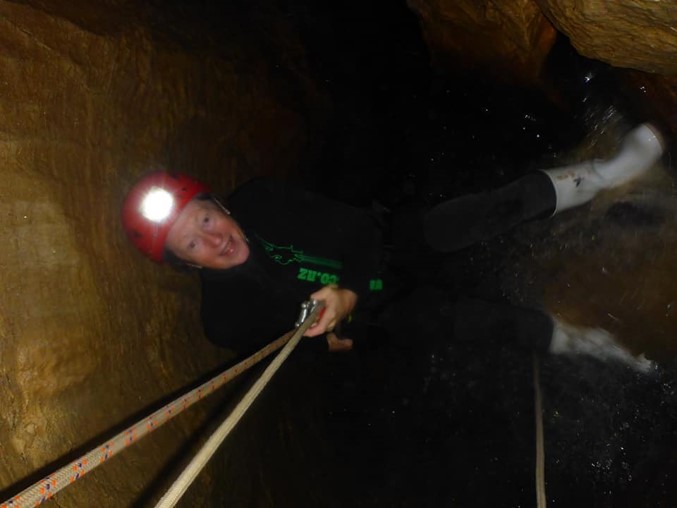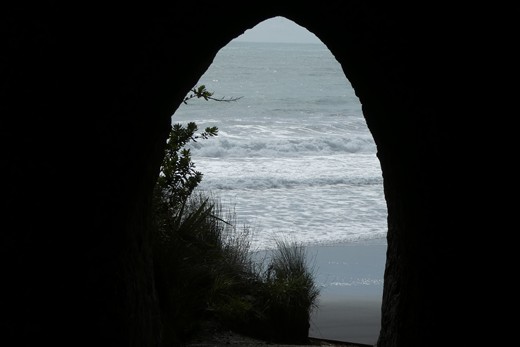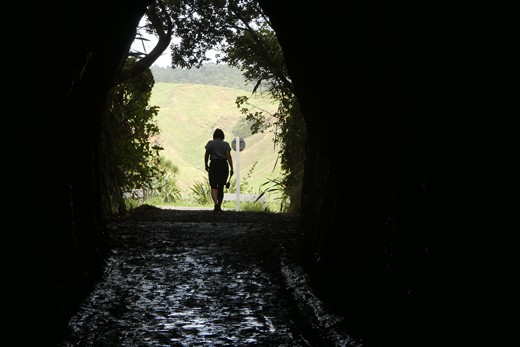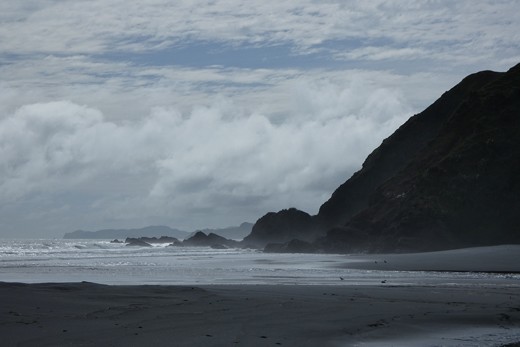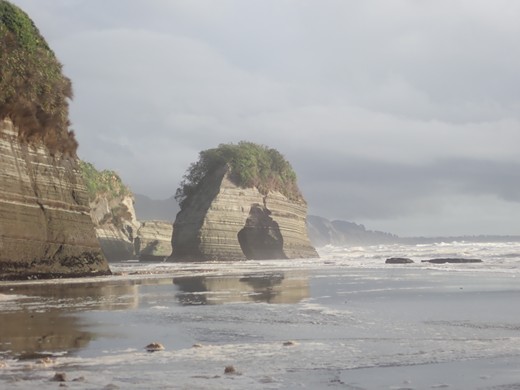North Island tour: Waikato and the wild west coast 38:49.46S, 174:35.17E

|
We picked up our campervan (a Toyota Hiace like last time) in Auckland on Saturday leaving our car in secure parking. We hadn’t been able to stock up ready for the trip before leaving Whangarei as it was Good Friday and all supermarkets close so our first stop was the closest store for provisions, then we drove south to our first campsite at Onewhero Domain. This was a grassy area besides the local rugby club where we had use of the clubs toilets. When we came to cook, we found there was no means of lighting the gas hob, so had to pack up and drive to the nearest village to buy a lighter. Next we found neither of the two gas burners would stay on properly and as it was Easter weekend there was no way of getting it sorted until Tuesday! We had a fairly gentle first few days, as Sarah had been given a cortisone injection in her back the previous week to try and relieve an inflamed facet joint. We drove to Port Waikato to look at the surf beach and then on to Raglan – another surf and beach destination that was packed on a bank holiday weekend. We stopped in a holiday park on Saturday night so that we could use their cooking facilities – we got the last available site, but despite the number of people in the camp it was quiet from 9pm to 7am. For our Devon friends, Raglan felt like a cross between Newquay (for the surf) and Totnes!
We spent the weekend seeking out coffee shops so we didn’t have to use the on board cooker. Betty Bean’s Easter Scoffins (a sort of hot cross scone) at Port Waikato were amazing!
The Waikato countryside is sometimes dramatic, but also very rural and green
On the way to Ragland we visited the Harikamata Reserve where this carving marked the walk to an old dam
As is often the case for us in New Zealand the dam was not what we expected. Hidden in the green of the forest you didn’t see it until you were right under it. Sarah walked as far as the dam, while Phil continued to the viewpoint at
the top of the hill
Shopping for bread in Raglan – a very tasty sourdough loaf We wanted to be close to Hamilton on Tuesday to get the cooker looked at so on Monday we took a slow drive along the coast road south of Raglan. It was mostly gravel with a couple of tourist stops along the way before we back tracked to camp at Ruapuka. We have found that the motor camps, which usually have a number of permanent residents and an on site warden, are some of the best places to stay and this was no exception. It was a peaceful spot nestled in a valley with the sound of the surf from the beach below and an old but clean facilities and powered sites for a good price. While we were here our supposedly full gas can ran out – another black mark for the campervan company, luckily we could use the camp facilities instead.
Tetoto Gorge was a dramatic viewpoint along the gravel road south of Raglan
The 55 metre high Bridal Veil Falls are a popular tourist site in Waikato
Steps allow you to view it from top, middle and below!
Ruapuka motor camp is sheltered among the trees on the hillside
There is a 20 minute walk from the camp to the beach, which we did on Tuesday morning once Monday’s rain had cleared Having got the cooker fixed in Hamilton on Tuesday morning, we felt like we were starting our holiday again, but with little time left in the day we re-visited Hamilton Gardens (we had been there on our first campervan tour in 2018), then camped just south of the city beside Lake Karapiro.
The highlight of the gardens for us was these little turtles enjoying the sun on the lily pond
Sanctuary Mountain, a short drive south of Hamilton, is a nature reserve protected by a 47 km long predator proof fence. Since the building of the fence they have all but eliminated non-native predators (possums, rats, hedgehogs) from the reserve and native birds are returning. We saw North Island Robins, Fantails, Stitchbirds and a Kaka (a species of parrot endemic to New Zealand and on the at risk list).
Sanctury Mountain’s predator fence takes some maintenance and has an alarm system to advise if it is breached (eg by a fallen tree) as it only takes 20 minutes from a breach for a predator to get in! After a night at a Department of Conservation campsite we drove to Lake Taupo to go kayaking. We had been without an internet signal virtually from when we left Sanctuary Mountain and as a result took the roundabout route to get there – doing a complete circuit of Lake Taupo and taking over 2 hours to cover about 6 km! The day was slightly overcast and flat calm – ideal conditions for our kayak trip to the Ngatoroirangi Rock Carvings beside the lake. The carvings were created over 4 years, completed in 1980, by a traditional Maori carver. The centrepiece is a 14 metre high representation of Nagatoroirangi, one of the artist’s ancestors and was designed as a permanent connection for his family to their land. You can only see the carvings from the water so you have to take a boat trip or kayak: its one of the top attractions in the area but on this day we only saw a couple of tourist boats and no-one else in kayaks, and we had the carvings entirely to ourselves. We had our lunch on a nearby beach accompanied by flocks of small birds (Tomtits and Whiteeyes) before returning the way we came. It was a round trip of 10 km, and our shoulder and back muscles were telling us about it by the time we got back.
The spectacular main carving
One of the guardians beside the main carving On Friday we checked into the YHA in Waitomo, where you can camp in the grounds and use the facilities of the hostel so we enjoyed the luxury of hot showers, a well equipped kitchen and a comfortable lounge for two nights, visiting a couple of local sites while we were there:
Another waterfall – this one at Marokopa
The spectacular Mangapohue natural bridge once part of a cave, the roof of which collapsed leaving just this short section forming a bridge over the river. On Saturday morning the nearby town of Te Kuiti was preparing for the annual Great New Zealand Muster when the main street is filled with sheep. There are also shearing competitions and our fellow guests at the YHA were the Mum and Grandmother of the newly crowned Junior Shearing Champion! We didn’t get to see the muster as we had an alternative engagement at the same time. Waitomo is in Limestone country and its main attraction is the glow-worm caves. Glow-worm is a misnomer, they are actually the larvae of the fungus gnat which create spider-like sticky strands to trap their prey then use bio-luminescence to confuse flying insects so they get entangled. The end result is a star filled grotto underground and you can visit by walking in, boating or even floating down the underground river on a tube! There are lots of different caves and trips and we were booked on Phil’s choice of Haggas Honking Hole (it was an early birthday treat for him). This was more of a proper caving trip, with less glow-worms but more adrenaline. We were the only two booked on the trip and had two guides with us (they looked far too young but were very good at their job)! We were kitted out with thick caving wetsuits, helmets and nifty white wellies before being given an above-ground lesson in abseiling – Phil knew how all the kit they used worked, but some of it was new to Sarah. The cave went down almost vertically for about 80 metres, following the river. It had been raining heavily during the morning and was forecast to carry on doing so all day, but because the river goes down so steeply the cave doesn’t flood. What it did mean was that there was a lot of water flowing down the waterfalls and we had to abseil through them. Lots of different descriptions are given of this experience, like being in a washing machine, but just imagine dangling on a rope under a waterfall after heavy rain and you’ve got it! There were three abseils of different lengths and degrees of wetness before we got to the bottom and then we had to climb back out again. Happily, having come down through the river, the ascent was mostly dry. When we got back we were told we were probably the ‘most senior’ couple to have completed that trip so we feel quite pleased with ourselves.
Going down
At the bottom We treated ourselves to a meal out in Waitomo before returning to the warmth of the hostel lounge, where we spent a lovely evening chatting to a couple who had spent their lives travelling the world with their children who competed internationally at sailing and windsurfing – meetings like that are one of the great enjoyments of travelling as we do. In recovery mode we drove gently south towards New Plymouth yesterday, spending more time along the wild and beautiful west coast with its black sand beaches. Our camping app suggested the campsite at Tongapoutu would be a good stop for the night and as we turned towards it Phil realised we had been here before on our return from South Island in 2018. Last time we couldn’t visit the nearby rock formations because the tide was wrong, but this time we managed it.
This tunnel was cut to the beach by local farmers who realised it was easier to move their cattle along the beach than across the hills above!
Wild west beaches
Only two remain of the 3 sisters on the beach next to our campsite, and the elephant rock has lost its trunk
The air along this coast is permanently misty from the ocean spray created as the Tasman swell crashes onto the beaches |
